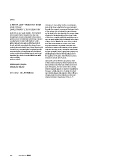Page 418 - Sotheby's October 3 2017 Chinese Art
P. 418
3740
A WHITE JADE ‘TWIN FISH’ BOWL This piece is remarkable for the even luminous
AND COVER tone of the stone, which has been accentuated
QING DYNASTY, 18TH CENTURY through the exquisite carving and lustruous finish
of the surface. By restricting the carved design
worked from one single boulder, the bowl with on the body to the four twin fish, the carver draws
deep rounded sides supported on four ruyi- attention to the high quality of the stone. Bowls
shaped feet, carved in low relief to the exterior of this form, complete with their matching covers
with four pairs of addorsed catfish, their sinuous are rare and required to be fashioned from stones
curving bodies detailed with stylised scrolls, of large size to allow for the cover to be created
with a ruyi and a lozenge motif between their from the same boulder, as in this case. Such
heads and tails respectively, the domed cover large jade boulders originated in the jade-rich
similarly decorated with four stylised floral motifs territories of Khotan and Yarkand, areas opened
formed from a canopy below formalised scrolls, only after the Qing army’s conquest of the north-
surmounted by a domed knop with a hollowed western territories in the eighteenth century. The
centre encircled by radiating lappets and a ruyi Qianlong Emperor himself frequently praised
band rim, the stone of an even white tone with the qualities of the jades from Khotan in poems
minor mottling incised on specific jade vessels.
14.6 cm, 5¾ in.
Jade bowls carved with this auspicious motif
HK$ 900,000-1,200,000 of two catfish and lingzhi, which represents the
US$ 116,000-154,000 wish niannian ruyi (‘May your wishes come true
year after year’), are rare and no other closely
清十八世紀 白玉萬年有餘蓋奩 related example appears to have been published.
Compare a bowl and cover of similar form but
carved with dragons illustrated in Robert Kleiner,
Chinese Jades from the Collection of Alan and
Simone Hartman, Hong Kong, 1996, pl. 79.
416 SOTHEBY’S 蘇富比

